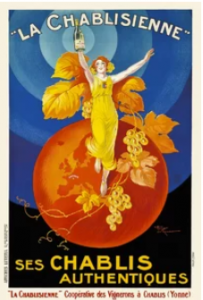Across Europe’s many wine growing regions there are regional cooperatives. These are societies that produce wines under the name of the locality, in many cases well-known ones such as Chablis or Barbera. In other places, they’re little more than the village wine press. The wines they produce, for the most part, are indicative of the style of that region. And why not? They are made from the same grapes that grow in that AOC, DOPG or whatever the local wine denomination may be. In some instances, they make rather good wine at a very good price. In others, the best wine available is pure plonk by any measure.
Why should a visitor to any particular corner of European Wine Country take the time to visit one of these cooperatives? The answer depends a lot on how you approach wine tasting and how much time you have.
If you are the sort who only wants to taste the very best products of the European vines, by all means spend your time in Bordeaux, Tuscany and the Rioja. Spend freely and drink deeply. And to be sure, there is a time in every wine lover’s life when he or she should get to know what truly great wines taste like.
But if you also want to get to know the geography of a locale, who the people are and how they live, where they shop and what they drink, the cooperatives are a great place to start. Very few people in Burgundy, for example, are drinking grand cru wines every night with dinner. We doubt that even the Rothschilds are quaffing Lafitte with a plate of charcuterie. And if you aren’t a baron, you probably don’t either.

A customer bringing his jug for a refill at the Coopérative d’Enserune in Languedoc, France.
What do the regular people in the small villages that dot the countryside do? They bring empty bottles and jugs to the cooperative and fill them up at a spigot, much like putting gas in their cars. The wine lists are not extensive: white, red and rosé are on offer, and often not all three if they’re not made locally. These folks go to their homes, eat nice meals and drink nice wines and are quite happy doing so. They’ll buy a good bottle every now and again for special occasions, but they don’t make a big deal about a pleasant beverage that accompanies their meals and their lives. Even as a visitor, if you want a picnic or light meal on your hotel balcony, why not do like the locals do?
Another good reason to visit some – not all – cooperatives is to get an introduction into the grapes, winemaking methods and terroirs of the region. In quite a few cases, one town may have a cooperative that’s almost a museum of their wines and the next one over is little more than an outlet store. It’s a bit of a crap shoot and there isn’t much available even on the Internet to guide you before you get there. Give a try, especially if you’re going to be in a town for a while. The worst that will happen is that you’ll walk in, have a taste and leave.
La Chablisienne may be as famous for this poster as they are for their wines.
Finally, there are some cooperatives that make really good wine. Often they make up a name for their labels so you won’t know they’re coop wines. Rasteau makes Ortas; Chablis has La Chablisienne. These are worth buying either while you’re there or if they show up in a local wine shop back home.
